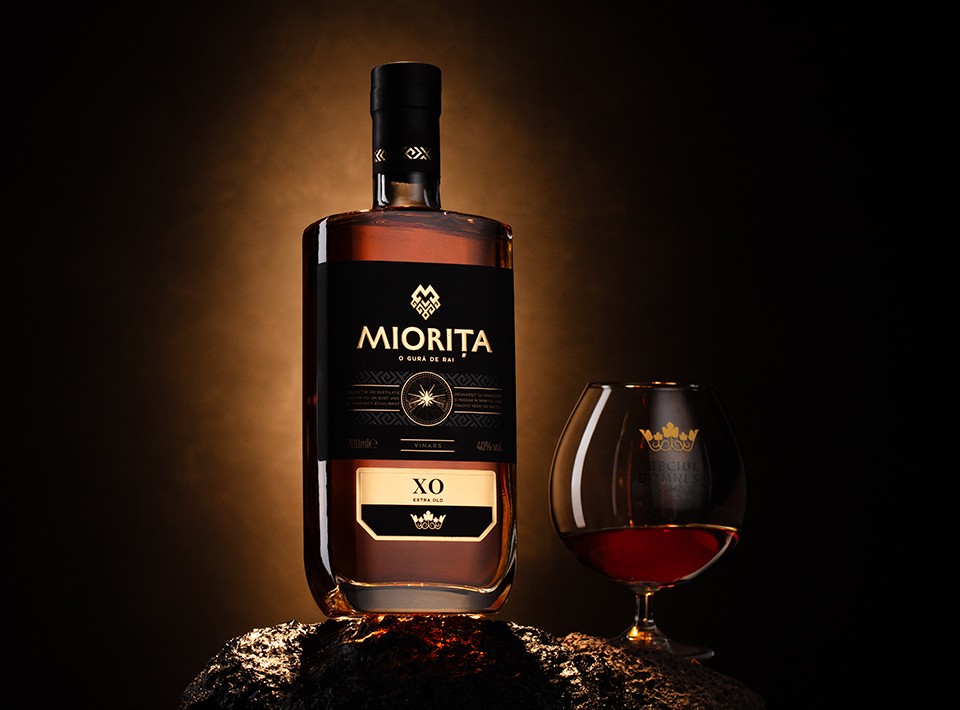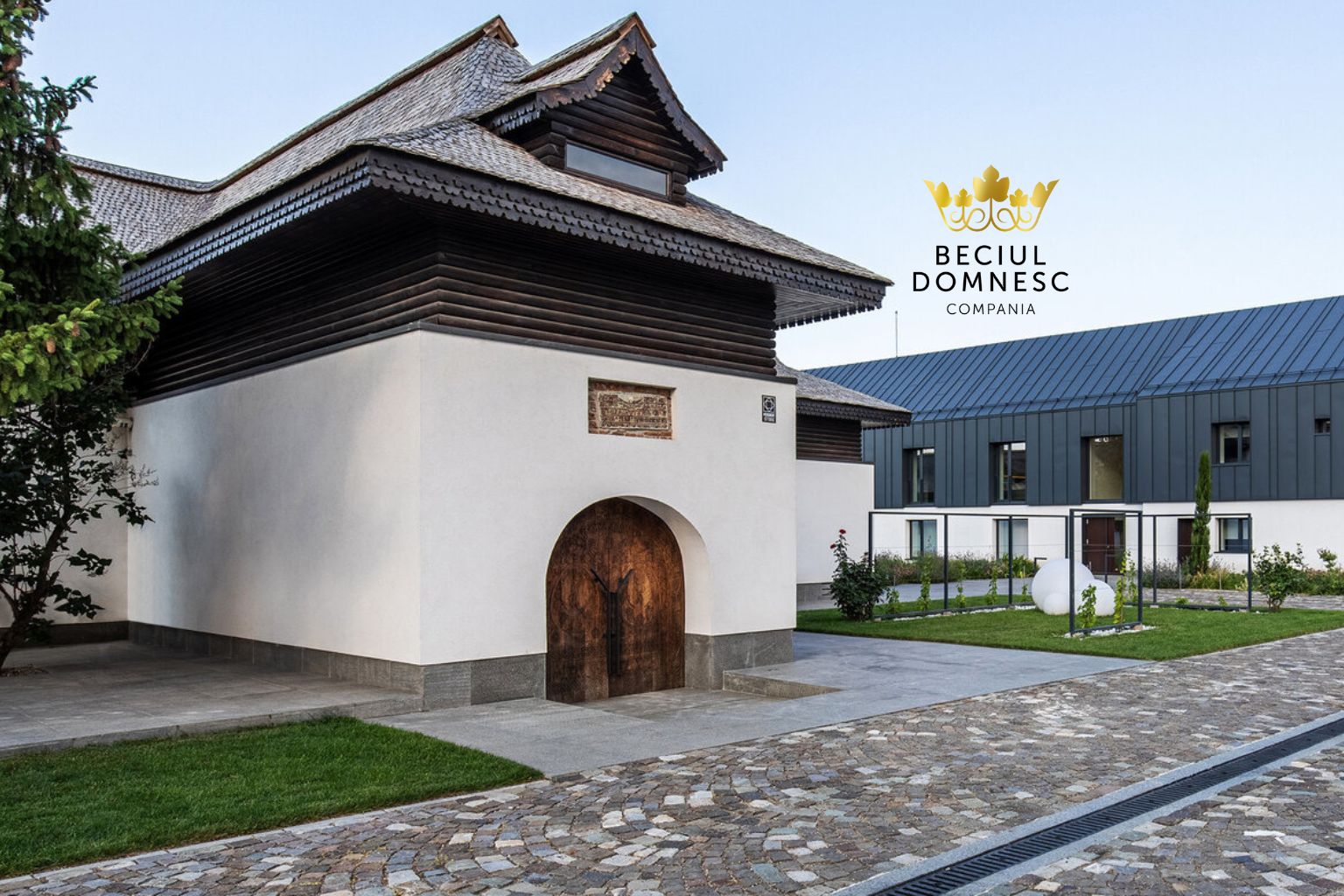The roots of Beciul Domnesc lie both in the centuries-old history of wine in Moldova and in the early forms of organized production established after World War II – namely, the famous "Vinalcool" units, typically organized at the county level, which handled grape processing for wine as well as fruit distillation.
- Vrancea - The Epicenter of Romanian Wine
- The Vincon Legacy
- 26 Wineries, Zero Vineyards
- From "Bulk Sellers" to Quality Wine
- From Zero to 1,400 Hectares
- Superbrand, Medals, and - Most of All - Wine for the People
- Beciul Domnesc – A Story About People
- Good Wine Needs Time - and Good People
- Beciul Domnesc - A Fountain of Stories
Vrancea - The Epicenter of Romanian Wine
Vinalcool Vrancea, later transformed into Vincon, and eventually into Compania Beciul Domnesc, was founded in 1949 with the challenging mission of processing all the grapes in the county. Why was it so challenging? It’s hard to grasp the true scale of this colossus – not only for that era but at any time in history, anywhere in the world.
At its historical peak, Vrancea had 47,000 hectares of vineyards, accounting for between a quarter and a third of Romania’s entire vineyard area. To handle the grape harvest from this massive area, 26 winemaking centers were built or developed. Of course, in a centralized economy, the emphasis was placed on quantity over quality, with yields regularly exceeding 10 tons of grapes per hectare. For comparison, other bottling centers of the time like Murfatlar, Jidvei, or Cotnari managed between 1,000 to 2,500 hectares, not including wines sent from around the country for bottling.
The Vincon Legacy
After 1989, part of the collective farm (CAP) lands were returned to former owners – initially in small parcels – and then, during the Democratic Convention government, a full “restitutio in integrum” principle was applied, returning lands regardless of size and, where possible, in their original location prior to communist confiscation.
Slowly but surely, former vineyard owners were reinstated. Some sold the land to entrepreneurs, others sold wine by the roadside. A few tried to make fine wine; others continued producing out of habit for old contracts – until the diminishing surface made it unsustainable. And there still likely exist clusters, officially or unofficially, that continue to produce wine or wine grapes.
26 Wineries, Zero Vineyards
“When I arrived at Vincon, in 2000, that was the situation – about 26,000 to 28,000 hectares, somewhere in that range,” recalls Corina Nedelcu, currently Product Manager for Beciul Domnesc. “And we had to ensure grape flow to the 26 wineries – it’s not the kind of raw material you can transport hundreds of kilometers.” “We had to reorganize somehow. Before, everything was done according to party and state rules… One lot would be sent to Zarea for sparkling wine, another to Murfatlar for bottling, others to CFR (the national railroad company) wagons for export. Bulk wine would leave here for Poland, Germany, and beyond – to Norway, Finland…
The problem was that none of it carried the producer’s name. The wines were excellent, but nobody knew us, no one associated us with the wine in the glass. Eventually, since this was the largest wine region in the country, we started bottling some of our own wines to help fulfill export demands – especially since we also had distillates, which were rare at the time. We had the Miorița cognac – yes, back then it was still called cognac, not wine brandy. It’s an iconic product for us even today – it was the first Romanian wine brandy to win gold at the Concours Mondial de Bruxelles, competing with the heavyweights from Cognac and Armagnac.
For me, the company’s history begins with these many traditions. Ms. Luchi Georgescu was the first woman in Romanian business operating at this level in the wine and spirits market. The deal with the FPS (State Property Fund) happened in 1999, and activity began in 2000. At that time, our portfolio included a few wines – mostly leftover stock from export orders, Columna and Miorița vinars, a sparkling wine, some vinegar… And, as a treasure, the monument Beciul Domnesc itself, a collection of wines dating back to 1949, along with wine-based distillates.
The goal was clear – quality wines. But beyond processing capacity – which was outdated – we had no vineyard,” recalls Corina Nedelcu.

From "Bulk Sellers" to Quality Wine
“When we went to industry meetings – at least in the first five years – we were treated like ‘litrari’ (bulk wine producers),” we weren’t considered qualified, not even to make wine for omelets…”
The company already had, as a starting point, strategic partnerships with local grape growers who had regained ownership of their vineyards. These partnerships ensured a flow of grapes to the winemaking centers. The next step was acquiring vineyard land to implement their own production philosophy – to have control over how the vines were managed.
From Zero to 1,400 Hectares
The stories about the rebirth of the 1,400 hectares now managed by Compania Beciul Domnesc are countless. Some vineyards had no match between the official records and the reality on the ground – from grape varieties to support systems. There were also extensive replanting programs with their own challenges.
It took boldness to go beyond the rules and norms of the time – especially when it came to adapting grape varieties to the specific features of each zone.Today, Beciul Domnesc manages vineyards in Cotești, Odobești, Panciu, and Huși, each with unique characteristics that influence the final grape quality.
If we were to follow the replanting calendar, we could say that Beciul Domnesc started becoming a mature company between 2015 and 2020, when the vineyards reached full production, results became predictable, and geographical diversification allowed underperformance in one area to be compensated by another – keeping wine quality consistent for the market.

Superbrand, Medals, and - Most of All - Wine for the People
Gradually, the accolades started to pour in. First came a gold medal for Miorița at the Concours Mondial de Bruxelles, competing against heavyweights from Cognac and Armagnac. Then came inclusion in the Top 300 Superbrands, alongside names like CEC and Borsec. Countless other medals followed at national and international wine competitions.
In Romania, the trend clearly moved toward dry, high-quality wines. There was a need for a core of knowledgeable consumers who could spread wine culture and help shape a class of educated drinkers.
Still, at Beciul Domnesc, beyond the daily effort toward premium wines, there was also a need for “locomotives” to support the business.
This is from a business point of view. But on the other hand, Romania and Romanians needed a “daily wine” – one that was enjoyable, affordable, and worth returning to frequently. After all, the measure of a wine market is also in consumption frequency, which translates at the end of the year into liters per capita.
While small producers were making a name for themselves and raising prices, Vrancea was producing wines for the everyday person. Whether we’re talking about wine without a DOC, without a PGI, and without a grape variety designation, branded simply as Muscatel, or about the semi-sweet Fetească Neagră under the Beciul Domnesc label, both were initially met with skepticism by “connoisseurs”, became staples on Romanian tables. It’s a success still hard to fully appreciate for its cultural and economic impact.

Beciul Domnesc – A Story About People
Vincon România, now known as Compania Beciul Domnesc, has always been a training ground for the Romanian wine industry. From salespeople to oenologists, many who were trained here went on to leadership positions at competitor companies. And yet, they still carry fond memories and a bit of love for the company where they started. “I meet people who tell me they saw our bottles on a store shelf, not positioned well, and they turned them around to face forward,” says Corina Nedelcu.
“No one pays them for that, just like no one pays them to speak well about us. It’s just that they still love this team.”
“The team built here is 100% the legacy of Ms. Luchi Georgescu. She’s a team player and someone who knows how to attract people, how to let them grow, how to provide the resources for development. She’s not the kind of person who just drops by a meeting, gives three directives, and disappears.
It’s always been: ‘What needs to be done today?’ And if a truck needs to be unloaded, then that’s what we do. Working alongside everyone else, shoulder to shoulder," says Corina Nedelcu.
Good Wine Needs Time - and Good People
You’ve recently had the chance to watch Luchi Georgescu in one of her rare appearances – on an episode of the Wines of Romania podcast. You’ve likely witnessed a remarkable force, a work ethic from another world, and an energy that is difficult to describe. Her reactions may seem instantaneous, but each one reveals clear reasoning beneath the surface. Some may call it “trained instinct,” but in truth, these are skills – abilities forged over tens of thousands of hours of work, negotiation, communication, organization, and yes, likely an innate leadership talent that has only sharpened over time.
Around her, like frigates, submarines, and cruisers aligned around an aircraft carrier, gather people whose personal histories have become intertwined with that of Compania Beciul Domnesc.
Corina Nedelcu arrived just a few months after Luchi Georgescu and has held every role the company needed – from Commercial Director to Head of Procurement and Product Manager.
Gianina Rusu, now the company’s CEO, has been part of it for 20 years. Roxana Aldulea, now Commercial Director, has been there for 21 years. And there are many more like them. Alongside this core team are those who were shaped at Beciul Domnesc and now contribute to the growth of Romanian wine elsewhere – at other companies.
Beciul Domnesc - A Fountain of Stories
We’ve spoken with many people from the company, and we’ll undoubtedly return with more stories. We also took part in a tasting of around 15 wines, and we’ll share more about them soon – great wines, deserving of medals at any global competition. We witnessed a magical moment, reminiscent of a child’s first words, first steps, or first award in school. But here, the results we see today come from 25 years of tireless effort.
It was a well-deserved celebration – and a permanent placement in the league of quality producers, a status that was envisioned from the very beginning, though few believed it would ever materialize.
And yet, here it is. Step by step, hectare by hectare, penny by penny (no dividends have ever been paid; everything has been reinvested!), person by person, and wine by wine, in quiet determination, with an investment of passion, seriousness, and dedication that’s hard to quantify, Compania Beciul Domnesc has earned the place it fought so hard for.






